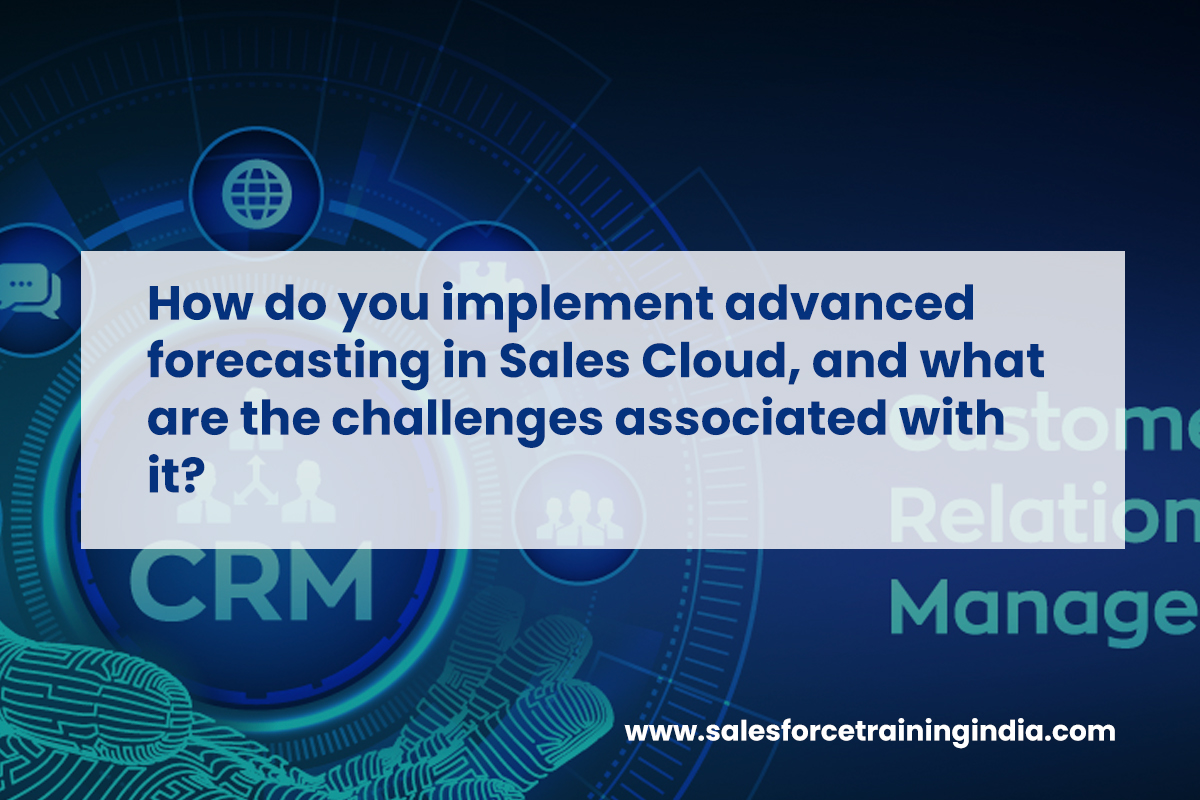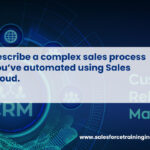Implementing advanced forecasting in Salesforce Sales Cloud involves setting up a forecasting solution that aligns with the specific sales processes, hierarchies, and reporting needs of an organization. This often includes configuring multiple forecast types, such as opportunity stage-based forecasting, revenue forecasting, and quantity forecasting. The steps typically include:
- Define Forecasting Criteria: Determine the metrics important for your business (like revenue, quantities, or custom metrics) and the time periods for forecasting (monthly, quarterly, annually).
- Customize Forecast Hierarchy: Set up the forecasting hierarchy to mirror your sales organization’s structure. This ensures that sales data rolls up accurately through the organization.
- Configure Forecast Types and Categories: Based on your sales process, define different forecast categories (like Pipeline, Best Case, Commit) and types (like Revenue, Quantity).
- Adjust for Custom Fields and Formulas: If needed, incorporate custom fields and formulas to tailor the forecasts to specific business needs.
- Enable Collaborative Forecasts: Use Salesforce’s Collaborative Forecasts for a more interactive and flexible forecasting approach, allowing sales reps and managers to adjust forecasts based on their market knowledge.
- Training and User Adoption: Ensure that the sales team understands how to use the forecasting tools and how their inputs affect the overall forecasts.
Challenges:
- Data Quality and Consistency: Accurate forecasting requires high-quality data. Inconsistent data entry or incomplete records can significantly skew forecast results.
- User Adoption: Getting the sales team to consistently use the system and update their opportunities can be challenging. Without their input, forecasts won’t reflect the reality on the ground.
- Complex Sales Processes: Customizing the forecast to accommodate complex or non-linear sales processes can be difficult, especially if these processes change frequently.
- Integrating External Data: If external factors significantly impact sales (like market trends or economic indicators), incorporating this data into Salesforce forecasts can be complex.
- Reporting and Analysis: Designing reports that provide meaningful insights without being overly complex can be challenging, especially in organizations with diverse product lines or market segments.
Effective implementation and ongoing management are key to overcoming these challenges and ensuring that the forecasting tool provides valuable, actionable insights for the organization.
Are you ready to elevate your Salesforce skills? Dive into our specialized Salesforce training in Hyderabad, meticulously designed to provide hands-on experience and real-time knowledge. Our comprehensive, project-based course ensures you gain practical skills with daily notes, engaging projects, and targeted preparation for certifications and interviews, preparing you thoroughly for the dynamic Salesforce ecosystem.
Don’t hesitate to boost your career prospects. Enroll today in our Salesforce course for beginners and benefit from personalized mentorship by seasoned instructors. Whether you’re starting fresh or aiming to refine your Salesforce expertise, our tailored program in Hyderabad is crafted to support your professional growth. Take charge of your career journey with us today.





